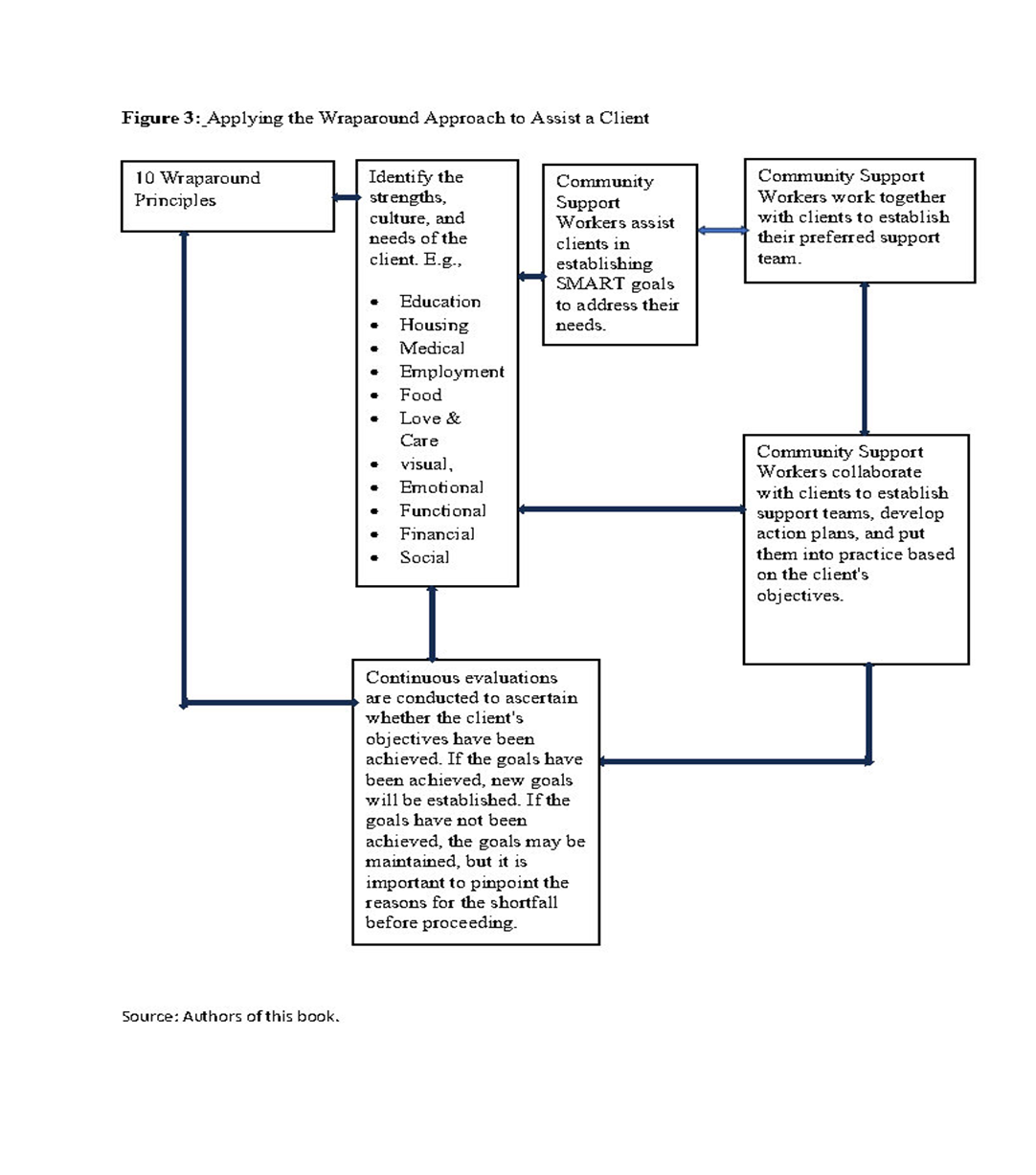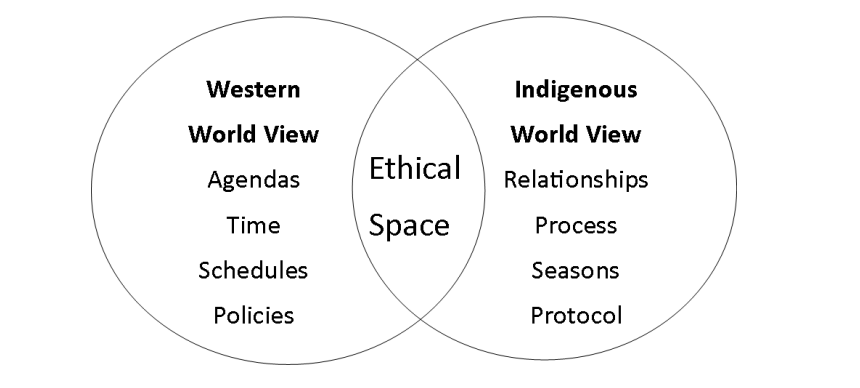Process of Helping
Another helping approach is based on the wraparound philosophy (Rosa-Davila & Lozada, 2021). Wraparound is a mental health service philosophy for children and adolescents that includes a defined planning process involving the child, adolescent, and family in making treatment decisions. As a result, it creates a unique set of individualized community services and natural supports to achieve multiple positive outcomes (p. 1).
Polk County Oregon (n.d.) discussed wraparound services and listed the required processes for this approach to be successful: identifying youths’ strengths, needs, and culture, which can mean a way of life, and working with a care coordinator to form a wraparound team to create a plan focused on needs and strengths. Wraparound services involve ten principles (Figure 3) to meet the needs of the clients.

These principles focus on including clients’ families’ voices and choices, because they likely know the clients better and can help to monitor the implementation of the clients’ goals. The clients recommend natural support people to the team, such as parents, siblings, extended family members, coaches, counsellors, therapists, teachers, or others. The wraparound approach is collaborative among clients, parents, natural supporters, and the team, who work together to support the clients.
Polk County Oregon’s (n.d.) cultural competence principle enables clients to receive support based on their culture. Knowledge of the culture enhances the confidence of the support team. The wraparound approach is individualized and focuses on everyone holistically by determining their strengths rather than their limitations. Strengths can simply be clients’ ability to play basketball, write poems, sing, or speak in public. The responsibility of the team is to support clients to enhance their talents. Care based on a wraparound approach is unconditional and should not be forced on clients. As an outcome-based initiative, the focus is on the outcomes after the process is completed. All the resources to support clients are in the community, and the clients and team members live in the community; this means the service is strongly community-based.
Relationships in Helping
In the helping process, it is important to consider the importance of relationships. “Indigenous cultures are relationship based [… and] all of life is connected” (Alberta College of Social Workers, 2019, p. 9). One model that reconciles different worldviews in the helping process is the idea of an ethical space developed by Willie Ermine (as cited in the Alberta College of Social Workers). Figure 4 below demonstrates the Western and Indigenous worldviews, and how the value approach to helping differs. The ethical space is where those differences can be considered, acknowledged, and respected. As a CSW, you must consider cultural perspectives when helping clients. Exploring different values on helping and relationships helps you to best assist clients in a meaningful way.

References
Alberta College of Social Workers. (2019). Honouring sacred relationships: Wise practices in Indigenous social work. https://acsw.in1touch.org/uploaded/web/RPT_IndigenousSocialWorkPracticeFramework_Final_20190219.pdf
Polk County Oregon. (n.d.). Behavioral health: Polk County wraparound services. https://www.co.polk.or.us/bh/polk-county-wraparound-services
Rosa-Davila, E., & Lozada, V. (2021). Wraparound as a community mental health service philosophy for children and adolescents. Journal of Mental Health and Social Behaviour, 3(2). https://doi.org/10.33790/jmhsb1100147
Image Credit
Figure 3: Applying the wraparound approach to assist a client by Janna McCaskill and Leonce Rushubriwa for NorQuest College. Used with permission.
Figure 4: Ethical space by University nuhelot’įnethaiyots ’į nistameyimâkanak Blue Quills for Alberta College of Social Workers.
The way of life and traditions of a group of people in a specific place or environment.

